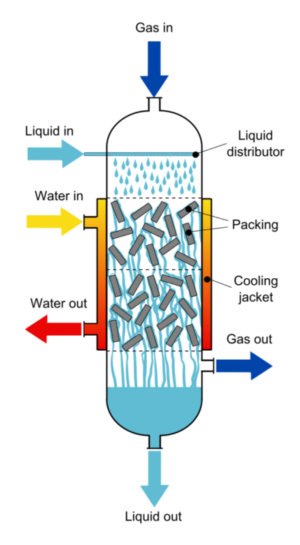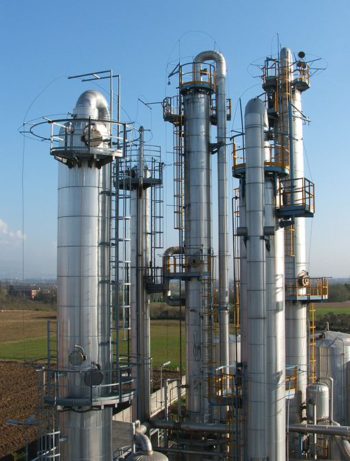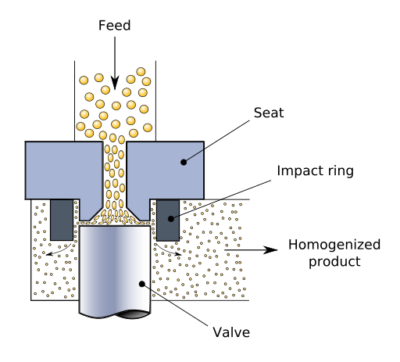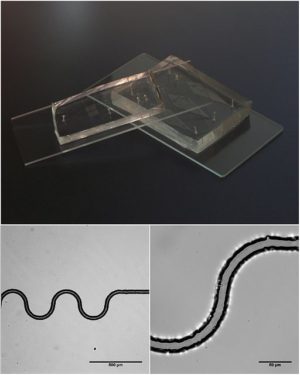Examples of applications which could be realized using the novel TAM technology

By Daniele Pugliesi (Own work) [CC BY-SA 4.0 ], via Wikimedia Commons
Micro structures for heterogeneous catalysis
For heterogeneous catalysis, structures can be fabricated using our TAM technology with the following features
- exactly defined inner geometry with high specific surface area
- high void fraction and thus low pressure drop
- intense mixing within the reactor also at low Reynolds numbers
- excellent liquid distribution in gas-liquid reactions
- good temperature control through convection as well as conduction
Compared to pellet reactors, the pressure drop is much smaller at comparable specific surface areas. However much higher specific surface areas are possible while intense mixing and convection can be maintained.
Compared to classical monolith reactors, this structure allows for much better temperature control as well as mixing within the reactor. In laminar single phase operation, the induced mixing and convection eliminates diffusion limitations. The gas side transport of reactands to the active zone and reaction products away from it is increased by a factor 3 to 8. This will in some cases allow for a significant reduction of the reactor volume. The pressure drop of such reactors is low and can be brought to a similar level as for conventional monolith reactors.
Reactors using such novel structures can be made compact and the amount of expensive active material necessary can significantly be reduced.
Structures with specific surface areas of up to 10’000 m²/m³ and void fractions of up to 90% can be realized

By derivative work: Anasofiapaixao Spiral_heat_exchanger.png: Michael Schmid (Spiral_heat_exchanger.png) [ (GFDL), CC-BY-SA-3.0 or (CC BY 2.5], via Wikimedia Commons
High performance heat exchangers
Compact high performance heat exchangers or coolers can be constructed using our TAM technology for special applications requiring extreme performance or chemically inert equipment.

By Luigi Chiesa (Own work) [CC BY-SA 3.0 ], via Wikimedia Commons
Counter current mass transfer systems
Special micro structures for counter current mass transfer such as rectification or liquid-liquid extraction, fabricated with our TAM technology, are under development. They will offer the following features
- high specific surface area
- high throughput for both phases
- intense mass transfer
- very high capacity due to flooding delay measures
- elimination of liquid maldistribution issues
- liquid distributors and collectors directly built into the micro structure
The result will be revolutionary novel structures for extremely compact mass transfer solutions. It is expected that these structures can be made roughly a factor 10 smaller than towers with conventional structured packings. They will be ideal in situations, where space is limited or expensive.

By Valvola_omogeneizzatrice.svg: Daniele Pugliesi derivative work: Daniele Pugliesi (Valvola_omogeneizzatrice.svg) [CC BY-SA 3.0 or GFDL], via Wikimedia Commons
Dispersion, foaming, emulsification, homogenization systems
The TAM technology can be used to mass produce micro structures for very efficient liquid-liquid dispersion, foaming, atomization, emulsification or homogenization. Processes using such micro structures will feature superior economics, both with respect to initial investments and to operational cost

By Richard Wheeler (Zephyris) (Own work (Original text: self-made)) [GFDL or CC-BY-SA-3.0], via Wikimedia Commons
Microfluidic devices
Microfluidic devices are used in an increasing number of applications. The TAM technology allows for devices with complex 3D internals and capillaries to be efficiently fabricated. The ability to combine different materials in such parts should allow for microfluidic devices, which have actuators or measurement probes directly printed in

picture source: Johns Hopkins University School of Medicine
Synthetic bone graft
For surgical applications, porous structures made of ceramic materials such as HAP or similar are developed and used for cases, where bone fragments need to be replaced. If designed with the required internal pore size distribution, such artificial bone replacements can promote an ingrow of natural bone. The ability of the TAM method to combine multiple materials may be helpful in the construction of replacement materials, which not only promote bone ingrow but also provide for structural stabiliy
